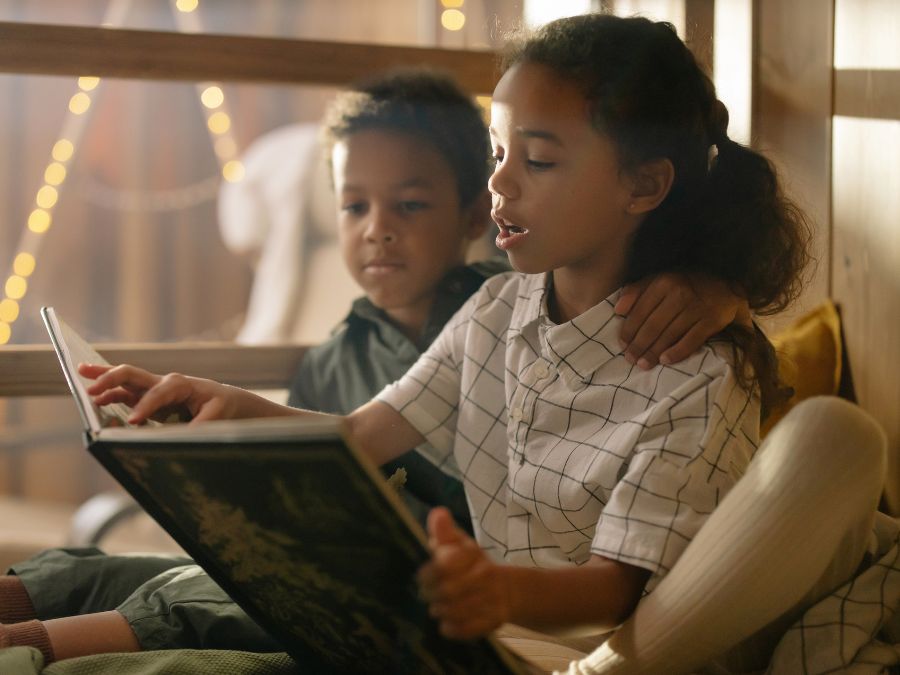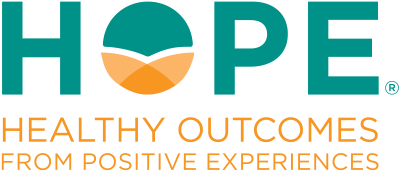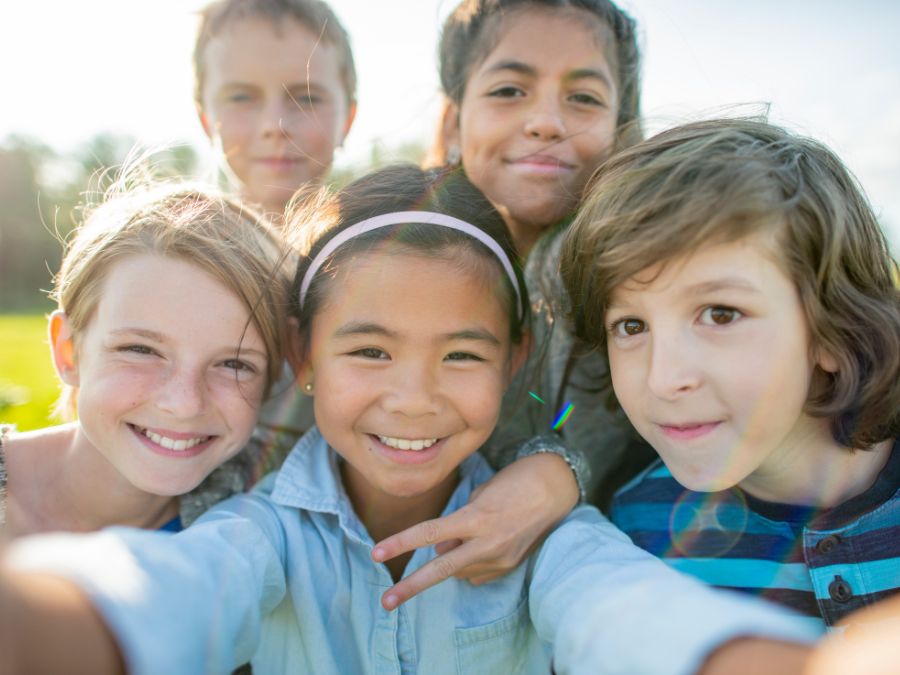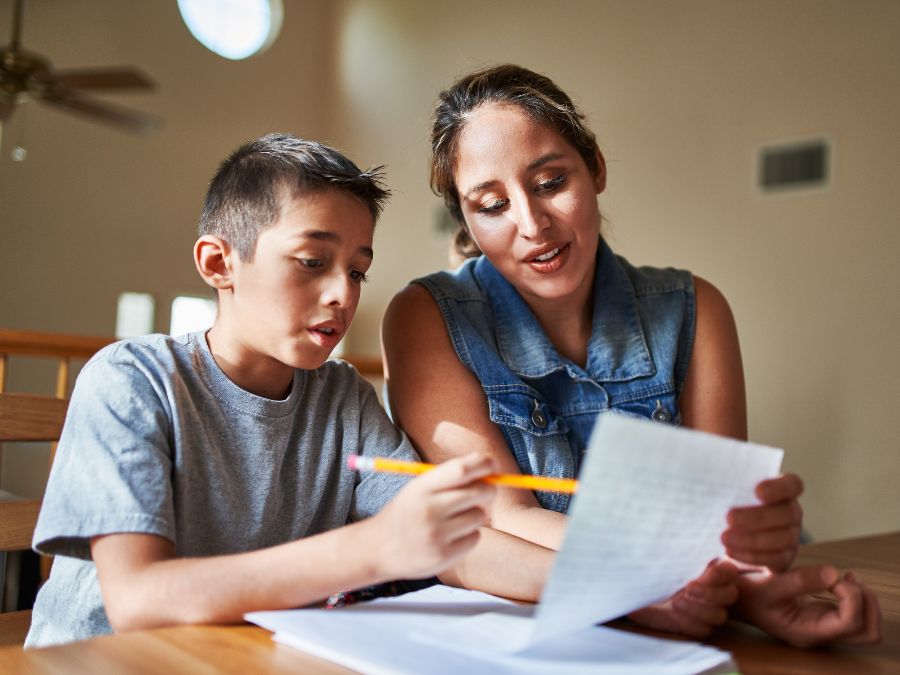
Seeing and practicing PCEs through reading
The books we read as children and throughout adolescence help inform us of the world around us and can provide a safe space for positive childhood experiences (PCEs). Through reading, we learn about bravery, adventure, how to love, and how to be kind. We fall in love with characters who are different from us and connect with those we see ourselves in.
Reading is also a great way to practice key types of PCEs we call the Four Buildings Blocks of HOPE. We can build relationships by reading together, create a safe environment to explore new genres and different worlds, engage in book clubs, and read stories that challenge us to emotionally grow and extend our perspectives. All of these experiences are accessible for free through our local libraries, where parents can take their children to pick out books for them to read together.
Classic book recommendations
We have identified classic stories for young children and adolescents that show examples of one or more of the Four Building Blocks. These books share the importance of loving and supportive relationships, caring about something bigger than ourselves, strong leadership, growing up in the face of adversity, and many more themes that promote PCEs.
Goodnight Moon
Author: Margaret Wise Brown
Illustrator: Clement Hurd
Reading level: 1.8
Building Block: Relationship, environment
Goodnight Moon seems like a simple story, but it highlights all the important relationships in our lives. Beyond the relationship with our parents and siblings, there are so many ways children are supported. By reading Goodnight Moon together, you can think about all the different people, animals, and things around your home to say goodnight too.
The Lorax
Author and Illustrator: Dr. Seuss
Reading level: 3.1
Building Block: Environment, engagement
The Lorax teaches us the importance of engagement through standing up for others. The Lorax fights for the trees and shares an example of greed going too far. This book instills important values of caring for our communities and knowing that our voice matters. We learn that even just one small person can make a whole lot of difference in this world.
Love You Forever
Author: Robert Munsch,
Illustrator: Sheila McGraw
Reading level: 3.4
Building Block: Relationship, environment
Love You Forever shows a parent’s consistent love and support throughout the lifetime of their child. Through this story, children learn that they are always deserving of love no matter what stage of life they are in. From birth to adulthood, the mother in this story always shares how much she loves her son.
Where the Wild Things are
Author and Illustrator: Maurice Sendak
Reading level: 3.4
Building Block: Emotional growth
In Where the Wild Things are, join Max on his adventure to a new land where the other Wild Things live. Max begins as a troublesome kid who gets sent to his room without dinner. But, after living with and ruling the Wild Things, Max learns that is tough to be in charge and learns to appreciate his life at home.
Winnie-The-Pooh
Author: A.A. Milne
Illustrator: E.H. Shepard
Reading levels: 3-7, depending on the story
Building Block: Relationship, environment, emotional growth
Through the series of Winnie-The-Pooh, we learn that we can come to our friendships as our full selves and be accepted and loved. Whether we are feeling sad, anxious, hyper, or hungry, we are accepted among our friends. Winnie-the-Pooh offers many stories sharing the importance of these relationships, and the safe environment of the Hundred Acre Wood.
A Wrinkle in Time
Author: Madeleine L’Engle
Reading level: 4.7
Building Block: Emotional growth
As the main character of A Wrinkle in Time, Meg travels to different worlds to find her father who has been missing. She learns to embrace what makes her unique. Share in this adventure with Meg, her brother Charles and their friend Calvin, as they travel to unknown worlds, fight conformity, and save their father.
Matilda
Author: Roald Dahl
Reading level: 5
Building Blocks: Relationship, environment, emotional growth
Matilda is a story about a young girl who finds her own inner strength to stand up to bullies with the help of some very important friends. When Matilda goes to school for the first time she learns there are more bullies in the world than just her parents. Through newfound powers and a brave heart, Matilda and her friends stand up to the school bully, their principal, Miss Trunchbull. This story shares the importance of positive relationships and their ability to give us strength and even help create safe environments for us to thrive.
The Hobbit
Author: J.R.R. Tolkien
Reading level: 6
Building Blocks: Relationship, engagement, emotional growth
In The Hobbit, find your bravery with Bilbo Baggins, a Hobbit from the Shire. Throughout his adventure to the Lonely Mountain to slay the dragon Smaug, Bilbo finds his courage, learns to trust his new friends, and surprises everyone with his strengths and perseverance.
The importance of sharing books that shaped us
This is a short list of books, and there are many others that connect to the HOPE framework. Think about the books in your youth that shaped how you see the world and yourself in it. What books made you feel safe or seen? What books made you fall in love with a new genre? When we share these book recommendations with the children and youth in our lives we are sharing a part of ourselves with them, strengthening our relationships. If children or youth express interest in the book recommended, be sure to follow up with them, learn what they think of the story, what stood out to them, and why it may be important to them.


